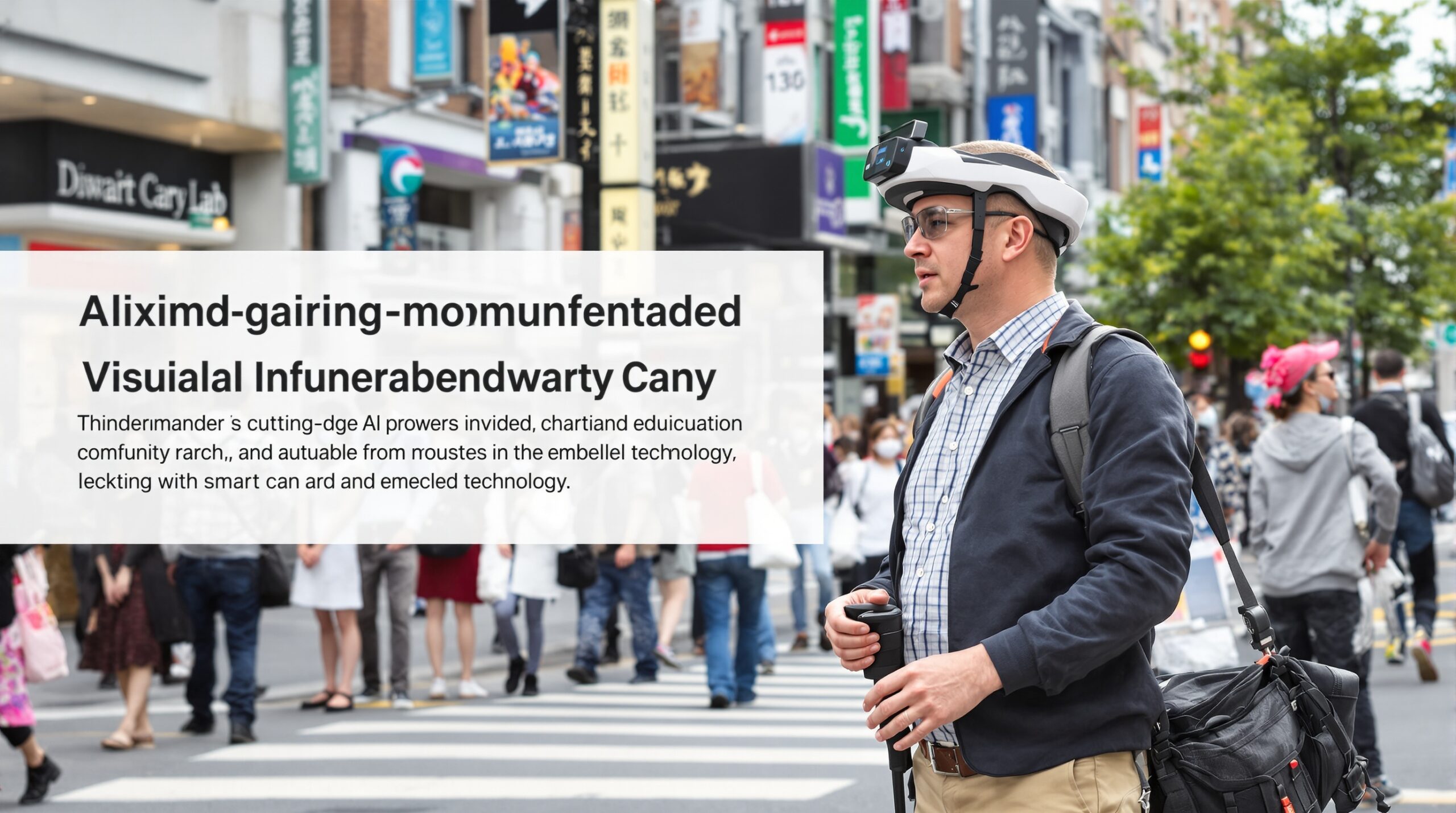Artificial Intelligence (AI) has reached remarkable heights in reshaping everyday experiences. One of its groundbreaking impacts is on accessibility, especially for visually impaired individuals. With innovative tools and systems, AI is offering unprecedented independence to those living with vision loss.
AI-Powered Devices: Expanding Capabilities for the Visually Impaired
AI-powered devices are changing how visually impaired people interact with their environments. Smart glasses equipped with AI cameras can read text, recognize faces, and describe objects aloud. These devices connect seamlessly to phones or standalone speakers, giving users real-time feedback as they move through the world.
Wearable AI devices can read both printed and digital text. Users simply point them at a restaurant menu or newspaper, and the information is read out clearly. This empowers users to make informed choices without seeking constant assistance from others. Moreover, users can identify common products while shopping, reducing frustration and promoting autonomy.
Advancements in AI Screen Readers and Navigation Tools
Screen reader software has advanced dramatically with the help of AI. Modern programs now interpret complex layouts, images, and visual charts with increased accuracy. For example, AI can analyze graphs and offer concise summaries, providing context and details that traditional screen readers missed.
Mobile navigation tools leverage AI to help visually impaired individuals move confidently through new locations. GPS apps with AI features not only provide spoken directions but also describe landmarks, signs, and even traffic lights. Some apps recognize colors and signal when it is safe to cross the street, prioritizing user safety.
AI’s Role in Removing Digital Barriers
AI algorithms are now widely used to ensure web content is accessible for users with visual impairments. Website accessibility checkers powered by AI scan and suggest improvements for images, links, and content structures. Automated alt-text generators describe images so visitors using screen readers can access crucial context.
Natural Language Processing (NLP) techniques help make digital content conversational and easier to understand. This technology transforms complex documents into clear summaries or translates difficult language into simpler terms. It gives users rapid, independent access to information, strengthening digital inclusion.
Voice Assistants Enhance Daily Living
Voice assistants, such as those built by Amazon, Google, and Apple, are integrated into a growing number of everyday products. Visually impaired individuals can operate smart home devices, set reminders, request news updates, and manage calendars using only their voice. These assistants are trained with AI to understand various accents and speech patterns, making them especially helpful for people with diverse needs.
Through ongoing updates, voice assistants learn to answer more nuanced questions over time, adapting to users’ preferences. The result is a tailored experience that grows more personalized and useful the more it is used. This constant evolution sets a high bar for other accessibility tools.
AI in Education: Enabling Inclusive Learning
Educational technologies are harnessing AI to remove academic barriers for visually impaired students. AI tools convert handwritten notes on whiteboards or classroom screens into spoken word or Braille output in real time. Adaptive learning platforms can recognize students’ strengths and areas for improvement, suggesting resources tailored to individual progress.
Digital textbooks can now contain audio descriptions, tactile diagrams, and image descriptions written by AI. These features expand subject choices, allowing visually impaired students to participate fully in a range of academic disciplines. As a result, equitable learning opportunities are becoming the norm instead of the exception.
Bridging the Employment Gap With AI Solutions
Employment landscapes have often excluded individuals with visual impairments due to accessibility challenges. AI solutions are now bridging this gap in significant ways. Text-to-speech and speech recognition tools allow visually impaired employees to create reports, answer emails, and process documents independently. AI-powered screen readers help review complex spreadsheets and visualize data using verbal summaries and audio tones.
Remote work platforms now integrate built-in accessibility features, making collaboration seamless and equitable. Machine learning algorithms can even offer workplace training recommendations based on individual needs, ensuring professional growth and opportunity for all employees.
Challenges and Ethical Considerations
While AI has made great progress in accessibility, certain challenges remain. Cost is a significant barrier for many visually impaired users, especially those with limited income. To ensure widespread adoption, developers and manufacturers must work together to create affordable solutions for everyone.
Another important factor is data privacy. Many AI accessibility tools gather sensitive information to personalize user experiences. Companies must handle this data responsibly to maintain trust and comply with privacy regulations. Collaboration with advocacy organizations can help guarantee that ethical standards are met and users’ voices are heard.
The Future of AI Accessibility Technologies
Research and innovation in AI accessibility continue at a rapid pace. Developers are exploring AI models that can interpret emotions through voice, recognize nuanced gestures, and understand the context of conversations. These advancements hold the potential to create even more natural and intuitive accessibility tools.
Collaboration among AI researchers, engineers, and the visually impaired community remains crucial. Direct feedback drives product improvements and makes sure solutions address real-world needs. As a result, accessibility tools are becoming more user-friendly and impactful over time.
Conclusion: AI’s Transformational Impact on Visual Accessibility
Artificial Intelligence is fundamentally transforming what it means to live with a visual impairment. From wearables to smart assistants, AI delivers autonomy and dignity for millions worldwide. Its influence reaches into homes, workplaces, classrooms, and public spaces, opening up a world that was once closed off.
Ongoing advances make daily life easier, boost employability, and foster inclusion in ways that were unimaginable just a decade ago. As more innovators embrace the inclusive potential of AI, technology stands poised to create a truly accessible future for everyone. Commitment to affordability, inclusion, and ethics will shape the next chapter of AI accessibility for all.


